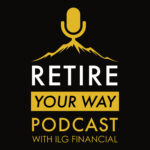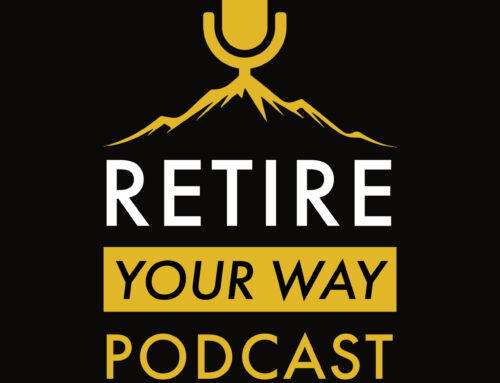 Let’s assume you’re ahead of your peers. You’ve saved, invested and paid down debts. Maybe you’ve even met with a financial professional to examine your retirement income options. But if you’re using traditional strategies, you still might find yourself behind the eight ball in retirement.
Let’s assume you’re ahead of your peers. You’ve saved, invested and paid down debts. Maybe you’ve even met with a financial professional to examine your retirement income options. But if you’re using traditional strategies, you still might find yourself behind the eight ball in retirement.
Preparing for your financial future requires considering things that aren’t necessarily within your control. It’s easy to select your target retirement date or to budget what you’ll need for monthly income, but projecting portfolio returns, life expectancy, taxes, inflation and health care needs amounts to strategic guesswork. These assumptions are risky business; even a small margin of error may throw your plan off course. In my experience, the one factor that generates the most problems is the assumed average rate of return on your investments.
The Flaw of Averages
Mark Twain once quipped that there are three kinds of lies:
“lies, damned lies and statistics.”
In other words, numbers can tell just about any story you’d like depending on the interpretation. Let’s look at an example.
Suppose your retirement portfolio takes a hit when the market drops like it did in 2008. Your account drops 40% — nearly half your life savings. But you don’t panic; reminding yourself that you’re in it for the long haul, you stay the course. The following year your patience is rewarded, and your account bounces back 40%. Phew — at least we broke even, right?
Wrong! Let’s assume you invested $1 million in that portfolio. After the first year’s loss, your balance would have dropped to $600,000. The subsequent rally helps you recover, but a 40% return only gets you back to $840,000. Your average rate of return over the time period may be zero, but the actual rate of return is minus 16%!
This difference matters. Unfortunately, many financial plans paint a false picture in relying on average rates of return. It might be nice to imagine earning smooth, steady rates of return in retirement, but we know the market is anything but consistent. A prudent plan should be mindful of market volatility.
Experience has taught me that your retirement strategy is most sensitive to market swings during the five years before and after your target retirement date. Your savings are at their pinnacle and thus more vulnerable to a market correction. What choice did those hoping to retire have in 2008? They might have chosen to delay retirement, waiting three to five years until their portfolios recuperated. Alternatively, they may have pressed forward with retirement, at the expense of accepting a lower standard of living.
Incurring losses around your target retirement date bears significant consequences. Despite this, many people are stubbornly or unwittingly counting on “age-appropriate” mixes of stocks and bonds to mitigate this risk. But these portfolio mixes, designed to deliver an average target rate of return over time, can fail to support your plan if the market ignores your projection and delivers an actual negative return when timing is critical.
Keeping It Real
This may be puzzling to seasoned investors. Why worry about market oscillation? Patience has always been regarded as the best tool to offset market volatility. We’re told that it’s panicking and selling at the wrong time that typically gets people into trouble. As long as you’re patient, you should be able to keep retirement on track, right?
Not quite. Whether market volatility is of consequence is almost exclusively dependent on timing. When you’re working, a market drop hurts. But you don’t need that money; you’ve got a paycheck. You can afford to ride things out. And continued systematic contributions only aid your recovery since, in theory, you’re buying low — a surefire way to recover.
When you’re near or beyond retirement age, the story changes. A market drop directly affects one of your primary sources of income. And you’re not contributing to those accounts anymore – you’re taking withdrawals in order to pay your living expenses! Staying patient for the long haul is no longer an option. And those withdrawn dollars will be painfully absent in helping the portfolio recover.
A Better Plan
A prudent retirement plan should be designed to withstand volatility and provide desired income exactly when you want it regardless of market conditions. Nobody wants to go back to work or be forced to downsize their home just because the market doesn’t cooperate with their time frame. Mitigating this volatility risk is necessary to keep your plan on track and on time.
This doesn’t mean you should avoid the market entirely; the stock market is still an excellent option for long-term growth. But you could consider allocating some of your portfolio toward assets that have a low correlation to the market: bonds you can hold to maturity or annuities featuring principal protection, backed by the financial strength of the issuing insurance company. There are numerous potential solutions, but the goal is to provide a hedge against short-term volatility.
It’s easy to be complacent right now. We’re going on ten years deep into the second-longest bull market in history. During this time, the S&P has averaged a 15% annual return. People are reluctant to jump off the bandwagon while things are going so well. But you’re smart; you know that you’re not going to get a memo before the market decides to head in the other direction.
Here’s where to start:
Measure the potential impact a market reversal may have on your plan.
Determine the rate of return your portfolio needs to provide sustainable income during retirement. This will help you determine how much risk exposure is necessary to accomplish that goal.
Imagine how differently you might behave with your money if you needed a 3% vs. a 6% rate of return on your portfolio to achieve retirement success. That knowledge is powerful. Now you can assess how best to strike a balance between risk- and safety-oriented strategies in the short term.
To all the conscientious savers out there, do yourself a favor — leave averages to baseball statisticians. Your financial future is too precious to leave to chance. Feel free to contact our office at (540) 720-5656 if we can help in any way.
Copyright © 2022 The Kiplinger Washington Editors. All rights reserved.
Distributed by Financial Media Exchange.























 Megan Jones joined the ILG Financial team in 2020 as marketing director. Megan and her husband live in Fredericksburg, VA with their German Short Haired Pointer, Gus. Megan is a graduate of Longwood University and holds a degree in communications. Megan is the oldest of Dave Lopez’s three children and not only enjoys working alongside her father, but also with her cousin, Chase, who joined the ILG Financial team in 2020 as an advisor. Megan is also a fully licensed Life, Health, and Annuity agent. When not at work, Megan enjoys sitting on the back porch with family and friends enjoying food and music.
Megan Jones joined the ILG Financial team in 2020 as marketing director. Megan and her husband live in Fredericksburg, VA with their German Short Haired Pointer, Gus. Megan is a graduate of Longwood University and holds a degree in communications. Megan is the oldest of Dave Lopez’s three children and not only enjoys working alongside her father, but also with her cousin, Chase, who joined the ILG Financial team in 2020 as an advisor. Megan is also a fully licensed Life, Health, and Annuity agent. When not at work, Megan enjoys sitting on the back porch with family and friends enjoying food and music. Chase Lopez joined the ILG Financial team in 2020 as an advisor. Chase is a 2016 James Madison University graduate with a degree in management. Chase has been trained under the tutelage of Dave Lopez, who is not only the founder and managing member of ILG Financial, but also is Chase’s uncle and godfather. He also enjoys working alongside his cousin, Megan, who is Dave’s daughter.
Chase Lopez joined the ILG Financial team in 2020 as an advisor. Chase is a 2016 James Madison University graduate with a degree in management. Chase has been trained under the tutelage of Dave Lopez, who is not only the founder and managing member of ILG Financial, but also is Chase’s uncle and godfather. He also enjoys working alongside his cousin, Megan, who is Dave’s daughter. Amy Anderson joined the ILG Financial team in 2023 as the client relations coordinator. Her responsibilities include scheduling of appointments, annual check-up notifications, and annuity and required minimum distribution assistance. She is a graduate of Harding University with a degree in Computer Information Systems. Amy and her husband have two children and she enjoys reading, crocheting, music and spending time with her family.
Amy Anderson joined the ILG Financial team in 2023 as the client relations coordinator. Her responsibilities include scheduling of appointments, annual check-up notifications, and annuity and required minimum distribution assistance. She is a graduate of Harding University with a degree in Computer Information Systems. Amy and her husband have two children and she enjoys reading, crocheting, music and spending time with her family. Jessica Carson joined the ILG Financial team in 2018 as an agent. Jessica and her husband have four children, two dogs, 3 barn cats, 5 chickens, and three parakeets. She indeed loves her children and pets! When not at work, Jessica enjoys playing the piano and cello as well as traveling and spending time outside with her family, hiking, fishing, and boating.
Jessica Carson joined the ILG Financial team in 2018 as an agent. Jessica and her husband have four children, two dogs, 3 barn cats, 5 chickens, and three parakeets. She indeed loves her children and pets! When not at work, Jessica enjoys playing the piano and cello as well as traveling and spending time outside with her family, hiking, fishing, and boating. Terri Center joined the ILG Financial team in 2019 as client services manager. She handles client records, application processing, and gathering information to provide a professional and friendly experience with all of our clients. Terri is a graduate of Oakland University. She is married and has two children. She enjoys hiking, family time, and puzzle challenging video games. She also likes to share her creativity in her canvas paintings and sewing projects.
Terri Center joined the ILG Financial team in 2019 as client services manager. She handles client records, application processing, and gathering information to provide a professional and friendly experience with all of our clients. Terri is a graduate of Oakland University. She is married and has two children. She enjoys hiking, family time, and puzzle challenging video games. She also likes to share her creativity in her canvas paintings and sewing projects.